Thirteen stand-out designs honored by AIA Small Project Awards
By Josh Niland|
Thursday, Jun 2, 2022

Related
Thirteen architectural projects from across the United States have been honored as part of this year’s AIA Small Projects Awards. The institution announced the 19th cycle of the awards today, with submissions from three separate budgetary categories and seven different states selected for the quality displayed within their practitioners’ designs.
The AIA has been instrumental in promoting the small project type through the establishment of its Small Project Design (SPD) Knowledge Community and continued push to raise awareness as to the value and design excellence that architects can bring to projects regardless of size or scope.
Take a look at the winning projects in all three groups below.
CATEGORY 1: Small project construction, an architectural object, work of environmental art or an architectural design element that costs up to $250,000 in construction.
Enough House, Shobac, Canada
MacKay-Lyons Sweetapple Architects

Project excerpt: "The light timber frame has become the dominant domestic construction system in North America. Still, despite its widespread use, high level of sustainability, and relatively low cost, architects have often been reluctant to embrace it. Enough House builds on and extends this understated, everyday method of construction. As demonstrated by this project, the discipline of listening to place results in an understated architecture that gains power by resonating with its environment."
Jesse’s House, Austin, Texas
Jobe Corral Architects
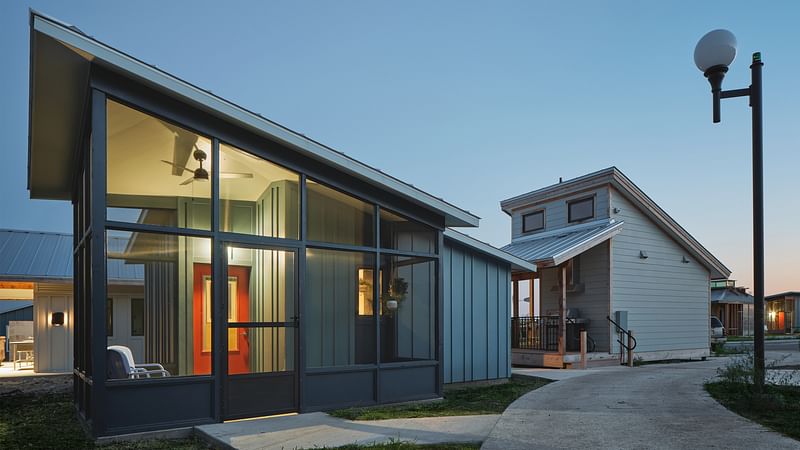
Project excerpt: "The space and budget for this project were both minimal, so the team’s design solution was simple and efficient. Jesse’s House was built with modest materials that form two discrete spaces: Jesse’s inward-facing living space and an outward-facing screen porch that he can share with friends. The home’s position and dynamic form maximize natural light and breezes while providing a more protected feeling inside. Careful attention was paid to material selection as the design will be replicated several times in a Phase II expansion of the village."
Leimert Park Community Fridge, Los Angeles, California
Ehrlich Yanai Rhee Chaney Architects
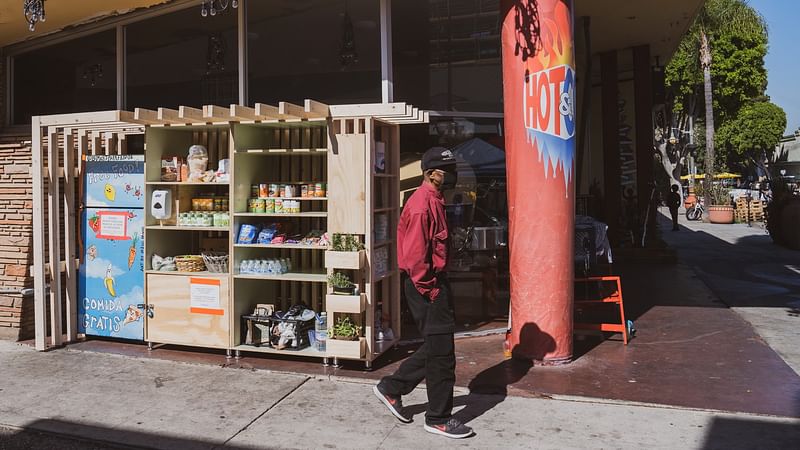
Project excerpt: "The first two modules are identical in size and feature open, flexible shelving that accommodates a variety of products. The third module, the smallest, serves as an endcap for the structure and takes advantage of storage space that would be otherwise unused. Running across the top is a series of wood members connecting the modules and forming a secondary structure for the roof. Overall, the modular design allows for flexible arrangement and easy replication."
Temporary Tiger, Austin, Texas
Murray Legge Architecture
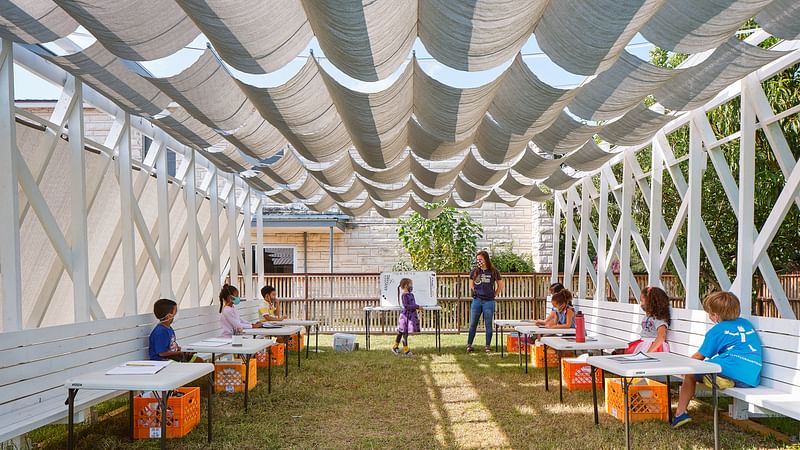
Project excerpt: "The structure is largely composed of 2x4 wooden studs secured to the ground with threaded pile anchors that are easily removed if needed. The team opted for stick framing since it is inexpensive and flexible, but the A-frame walls are also stable enough to include built-in benches for students to sit on. The repetition of frames and diagonal braces lends the structure a playful, graphic quality."
The Seattle Street Sink, Seattle, Washington
Elizabeth Golden and Richard Mohler, University of Washington
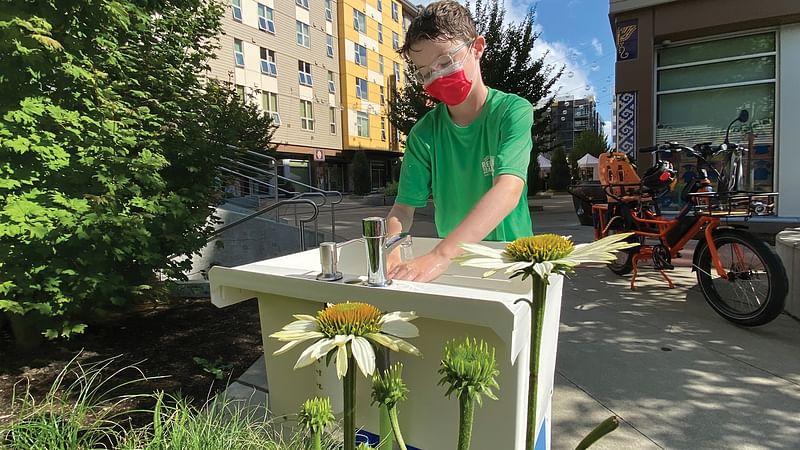
Project excerpt: "The team developed two sink designs that support hand and clothes washing in a utility sink basin, one of which is accessible to children and those who use wheelchairs. Both can be assembled from parts ranging between $400 and $750, and a companion website provides a part list and DIY videos. Eschewing the many expensive custom hand-washing stations that debuted during the pandemic, the Street Sink is a grassroots effort that has been replicated on the East Coast. However, its success is best demonstrated by Seattle’s $100,000 commitment to fund Street Sink installations in all nine city council districts."
CATEGORY 2: Small project construction that could cost up to $2,500,000 in construction.
Goatbarn Lane, Boulder, Colorado
Renée del Gaudio Architecture
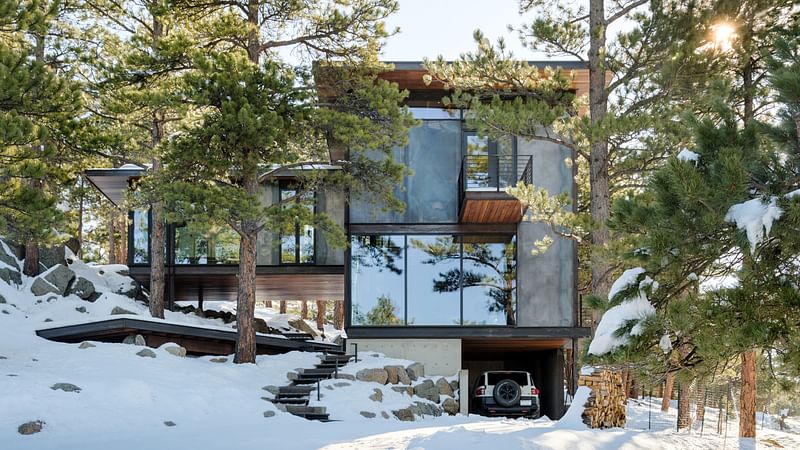
Project excerpt: "The home’s simple organization and its two volumes foster a calm and clear connection with its natural surroundings as it sits quietly among the pines. Its orderly, exposed structure supported by simple materials reinforces the driving architectural concept. Goatbarn Lane is built to respond to a warming planet with defenses against wildfires and a highly efficient design. Its cladding, concrete base, and ironwood eaves work together to create an ignition-resistant shell. The home’s siting beneath the shade of giant ponderosa pine trees, its floor-to-ceiling windows, and renewable energy allows the home to operate net-zero electric with no mechanical cooling."
Hill Country Wine Cave, Texas Hill Country
Clayton Korte
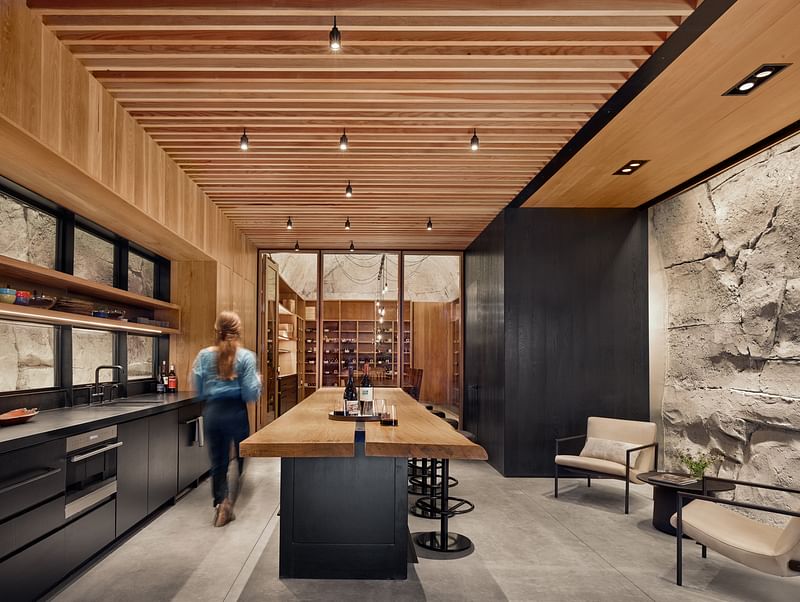
Project excerpt: "The cave's dimensional constraints were pre-established by an earlier excavation, challenging the team to design a beautiful wine cellar in a site that was neither watertight nor created for such a purpose. The response is presented in two distinct forms: the insertion of a delicate, human-scaled wooden module and a bulkhead that restrains loose limestone at the cave mouth and provides a predictable surface to wed the insert."
Little Tiger, Austin, Texas
Murray Legge Architecture

Project excerpt: "The new building finds inspiration in the classic American one-room schoolhouse and its iconic gable form, rectangular footprint, and single classroom space. Its size was tailored to the students, who are under four feet tall. The gable’s shape results in low eaves that assist in reducing the building’s scale, and the windows throughout the building are all child-height. Inside, a long and low bay window with a built-in bench serves as a reading nook."
Palms House II, Venice, California
Kevin Daly Architects
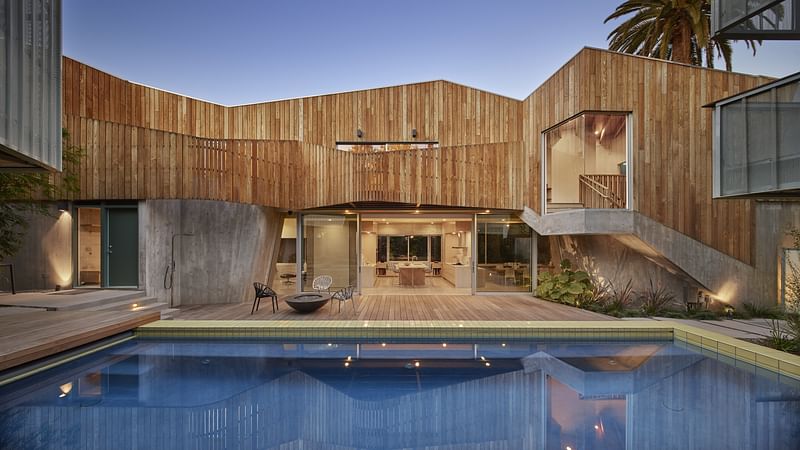
Project excerpt: "The original renovation of Palms I was a modest addition to a two-story stucco box that is surrounded by a perforated metal scrim enclosing the home’s terraces and offering shading at the south-facing glazing. The owners purchased the lot next to Palm I to accommodate their extended family and turned to the team to create a building that is architecturally cohesive but distinguished from their residence. As the family grew, an intergenerational shuffle began. Palms House I is now the primary residence for one of the clients’ parents, and a garage studio is a home for the single parent of another. Palms II is where the original clients now live."
SLC Fire Department Training Center, Salt Lake City, Utah
Blalock & Partners

Project excerpt: "The new training center is built upon the shell of the former 7,300-square-foot station located on the city’s western edge. Given the neighborhood’s assemblage of industrial development spanning several decades and the raw nature of its context, the center features an effective cladding strategy that provides texture, depth, and movement. It also operates as a double skin that assists with cooling the building and shades its openings. The new training center is built upon the shell of the former 7,300-square-foot station located on the city’s western edge. Given the neighborhood’s assemblage of industrial development spanning several decades and the raw nature of its context, the center features an effective cladding strategy that provides texture, depth, and movement. It also operates as a double skin that assists with cooling the building and shades its openings."
CATEGORY 3: Small project construction, an architectural object, work of environmental art, or an architectural design that is under 5,000 square feet.
A Wall Made of Bricks, Brooklyn, New York
Dameron Architecture

Project excerpt: "Equal parts time machine and work of art, A Wall Made of Bricks in Brooklyn’s Bushwick neighborhood is composed of building materials found at the site dating from 16,000 years ago to today. The team reused 11,000 salvaged bricks from the demolition of an existing warehouse to create this 200-foot-long street wall in collaboration with a group of master masons."
Marfa Suite, Marfa, Texas
DUST Architects
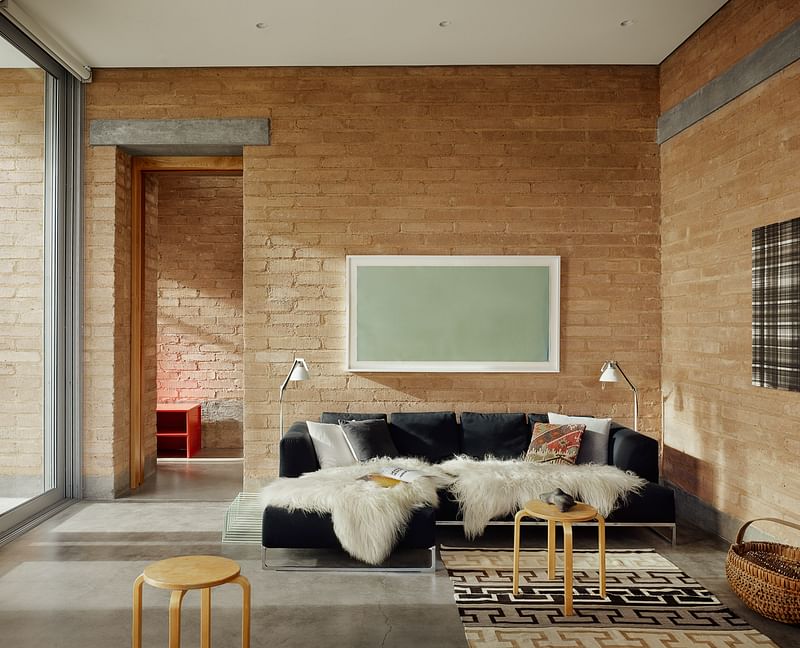
Project excerpt: "The suite is a series of rooms detached from the main house in a 36-foot by 36-foot square footprint. It requires the owners to engage with their desert gardens and the region’s smells, temperatures, and light qualities every day as they move between structures. Adobe brick, the suite’s primary building material, references Marfa’s history and material culture. The suite’s walls are composed of double-wythe 18-inch-thick compressed earth block walls, which do not require exterior plaster to protect the walls from the environment."
Spatial Laminated Timber (SPLAM) Pavilion, Chicago, Illinois
Skidmore, Owings & Merrill
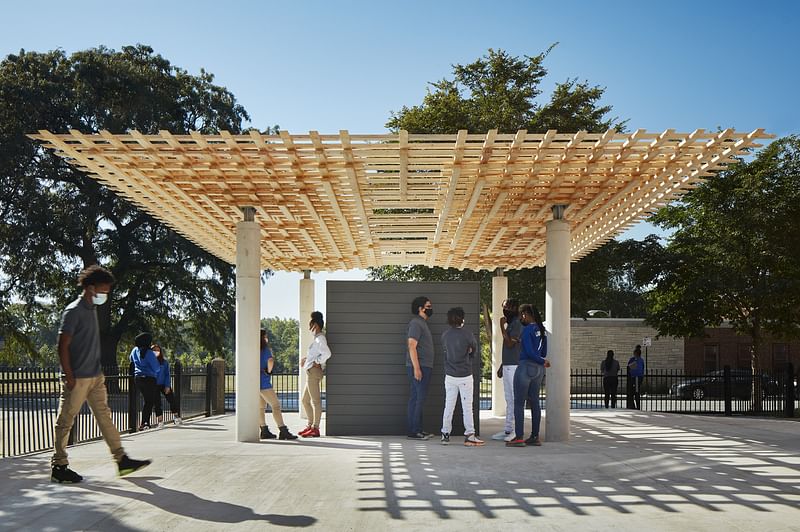
Project excerpt: "The pavilion has improved the existing site parking lot. It is now a vibrant space for learning and connection and regularly hosts community events and gatherings. When it debuted during the Chicago Architectural Biennial, it hosted performances by local artists from Chicago State University’s drumline and Back Alley Jazz, drawing attention to the pavilion’s presence at the school and its innovative features. It is a natural extension of EPIC Academy’s core values, focusing on active and experiential learning."
Read more about SOM's collaboration with the University of Michigan's Taubman College of Architecture and Urban Planning here.

RELATED NEWS Here are the 2020 AIA Small Project Award winners

RELATED NEWS Twelve projects win big in 2019 AIA Small Project Awards


Share
0 Comments
Comment as :